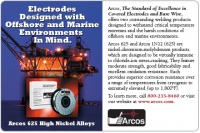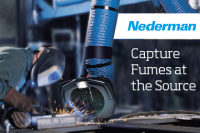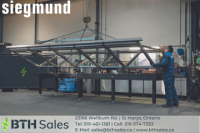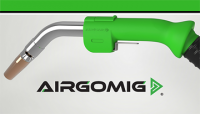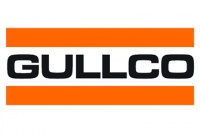DESIGN AND EVALUATION OF A PLATE CALORIMETER TO MEASURE GAS METAL ARC WELDING HEAT INPUT AND ARC EFFICIENCY
Weld heat input is one of the most important parameters in describing the energy dissipated in the weld metal, and depends mainly on current, voltage, wire feed rate and travel speed. The measurement of welding energy efficiency (the ratio between arc energy and energy transferred to the workpiece) is important for predicting cooling rates based on heat input, and numerical modeling. Although there have been a number of studies characterizing efficiency of different welding processes, new advances in power supplies can drastically change affect the weld energy efficiency. The present work describes the design of a water based calorimeter for measuring arc welding efficiency based on measurement of the temperature rise in water used to chill the back of a plate being welded. Energy input is determined from the temperature difference between water monitored at the inlet and outlet of the calorimeter before, during and after the welding. Numerical modeling of the calorimeter provided a verification of heat transfer rates, and suppressed potential recirculating flows and conduction losses. The calorimeter design was fabricated and a design of experiment method was used to determine the influence of plate thickness, welding power, and water fl ow rate on the overall efficiency of the calorimeter.
Become a member of the CWB Association by following these simple steps! Membership is Free.
Log In
Have a myCWB account?
You will be redirected back to this page once you've logged in successfully.
Don't have a myCWB account yet?
Register for an account and you can join the CWB Association during the registration process!
